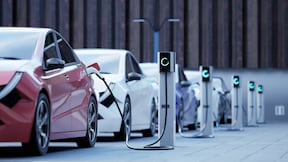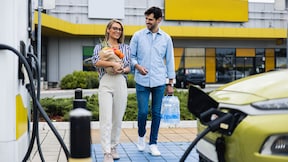Auto buying
To be confident when buying your next car, be sure to understand the basics and the resources that can help ease the process.
The basics of buying a car
If you’re in the market to buy your next car, or if you’re a first-time car buyer, you should feel confident in your purchase. These resources can help.
buying a carAverage monthly car payments in 2024

How much is the average monthly car payment in the United States? Read on to learn more about average monthly car payments and what factors impact it.
buying a carHow many types of car titles are there?

There are many types of car titles. Learn more about the differences, the various terms to be familiar with and much more!
See more about choosing a car
buying a car
Pros and cons of investing in an electric car Investing in an electric car involves weighing various pros and cons to determine the best fit for your lifestyle and needs. Read on to learn more.
Investing in an electric car involves weighing various pros and cons to determine the best fit for your lifestyle and needs. Read on to learn more.buying a car
What is MSRP? The manufacturer’s suggested retail price (MSRP) is a guidepost for buying a car. Read on to learn how to navigate it when car shopping.
The manufacturer’s suggested retail price (MSRP) is a guidepost for buying a car. Read on to learn how to navigate it when car shopping.buying a car
Cost to own an electric vehicle Electric vehicles (EVs) have a higher upfront cost but can lead to significant savings in the long run. Read on to learn more.
Electric vehicles (EVs) have a higher upfront cost but can lead to significant savings in the long run. Read on to learn more.buying a car
What to know about a car's out the door price A car's out the door price is different than its sticker price. Read on to learn more about out the door price and how it differs.
A car's out the door price is different than its sticker price. Read on to learn more about out the door price and how it differs.buying a car
States that allow non-resident vehicle registration Typically, your car needs to be registered in the state you live in, but there are states that allow non-resident vehicle registration. Read on to learn more.
Typically, your car needs to be registered in the state you live in, but there are states that allow non-resident vehicle registration. Read on to learn more.buying a car
What is a pink slip? A pink slip, also known as a car title, is a legal document that establishes a person or business as the legal owner of a vehicle. Read on to learn more.
A pink slip, also known as a car title, is a legal document that establishes a person or business as the legal owner of a vehicle. Read on to learn more.buying a car
What does “ran when parked” mean? “Ran when parked” suggests that a vehicle was in running condition when it was last turned off and left stationary. Read on to learn more.
“Ran when parked” suggests that a vehicle was in running condition when it was last turned off and left stationary. Read on to learn more.buying a car
Crew cab vs. extended cab: Knowing the differences If you're shopping for a truck, knowing the differences between a crew cab vs. extended cab can help you make a decision. Learn more with Chase Auto.
If you're shopping for a truck, knowing the differences between a crew cab vs. extended cab can help you make a decision. Learn more with Chase Auto.
Explore financial education